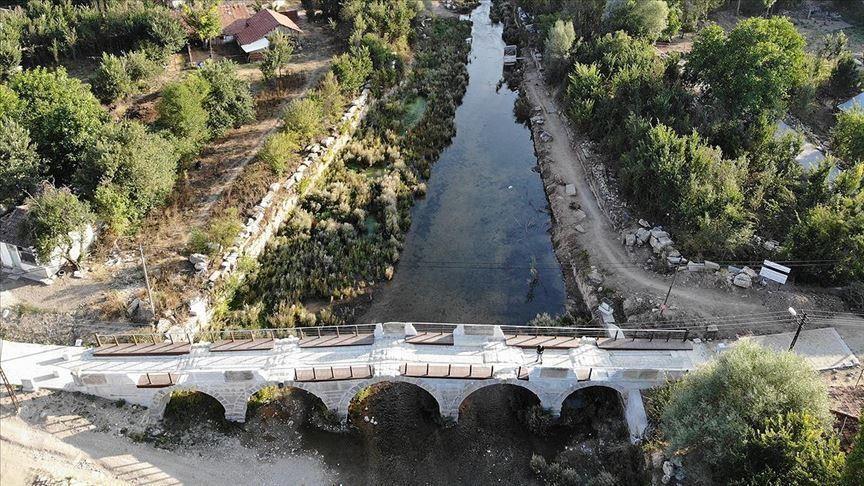
Visitors to an ancient city in western Turkey that thrived in the Roman era will soon be in for a special treat, as the city is set to offer riverboat tours through the 5,000-year-old site.
Elif Ozer, an archaeology professor at Pamukkale University and head of excavations in the ancient city of Aizanoi, told Anadolu Agency that the Aizanoi Penkalas Project would be the focus of the team, along with restoring the site's theater and stadium.
As part of this project, which began last year, boats will once again sail the waterway - as they did in ancient times - that still runs through the area.
Located just off the town of Çavdarhisar in Kütahya province, Aizanoi is also home to one of the best-preserved temples in Anatolia dedicated to the chief Olympian god Zeus of ancient Greek mythology.
Dubbed the second Ephesus, another iconic ancient city in Turkey, the city was added to the UNESCO World Heritage Tentative List in 2012, with excavation efforts ongoing for the last nine years.
"Most of the structural remains that have survived to our day from Aizanoi that are located on both sides of the Kocacay River (Penkalas) were built during the Roman era.
"On both banks of the river, there were protective walls made out of large cut stones to protect the city against the rising waters of the Kocacay, waters which still rise today," according to the Turkish Culture and Tourism Ministry.
Özer said that on the Roman coins, the Penkalas River is depicted as a reclining man.
"With the project, for which preparations began in 2012 and work started last year, [we plan to] sail boats between the two bridges as in the ancient times by raising the water level of the river," she explained.
Around 1,000 dressed stones and sculptures that go back to the ancient Roman period were removed from the river, she added.
"Under normal circumstances, we aimed to complete most of the project this year, but we had to interrupt the work due to the pandemic," she said.
"We aim to finish the project next year," Özer added.
According to Özer, although there were modern examples of such projects in other countries, none focused on the ancient age.
Sinan Özcan, the project coordinator, said: "The interest of local and international tourists will increase when this project is launched."
Located 57 kilometers (35 miles) from the Kütahya city center, Aizanoi "experienced its golden age in the second and third centuries AD and became the center of the episcopacy in the Byzantine era," according to the website of the Turkish Culture and Tourism Ministry.
Recent excavations around the Temple of Zeus indicate the existence of several levels of settlement in the city dating from as far back as 3000 BC. In 133 BC it was captured by the Roman Empire.
In 1824, European travelers rediscovered the ancient site.
Between 1970 and 2011, the German Archeology Institute conducted excavation work, unearthing Aizanoi's theater and stadium, as well as two public baths, a gymnasium, five bridges, a trading building, necropolises and the sacred cave of Metre Steune- a cultist site thought to be used prior to the first century BC.
Since 2011, Turkish archeologists have been carrying out work at the ancient site.